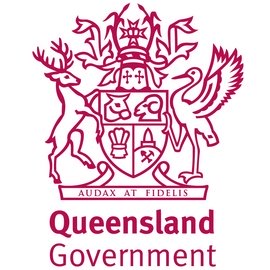But this morning was different. The muffin and hash brown weren’t delivering any joy as the news left me with a sense of disquiet about two seemingly unrelated stories.
The first of these was the class action against fast food chain McDonalds, for denying 250,000 workers their 10-minute break. Which explained why my hash brown appeared to be looking at me sideways.
The second, a meeting of school principals and ministers in a roundtable discussion about how to fix the nation’s growing teacher shortage - which struck a chord. Because up until recently, I was a school principal.
And while the two stories might seem very different, there’s a strong central theme that reflects the changing nature of what’s expected of workers, and the changing nature of what workers will accept before they take industrial action or quit.
Worker expectations
When I started out in my teaching career, it was a given that you’d ‘put in that little bit more’ to ensure that you got up to speed as quickly as possible, and did what you do to the best of your abilities. And this meant that you’d put in a lot of extra time.
Time spent planning lessons and developing teaching content for the week to ensure that you were on track to deliver what the national curriculum expects you to deliver; time spent assessing student work; time spent reporting; time spent away on camp; time spent on extra-curricular activities. Time that you weren’t specifically paid for.
For teachers, the time spent doing these things is significant. It can amount to several hours a day. Which is why I laugh when my hash brown asks how I feel about restaurant staff being denied a ten-minute break.
But you didn’t question the extra workload. You accepted it as part of the role. A role that had a lot of ‘soft’ benefits; time off in the school holidays, the ability to leave work in time to pick up a child from school, and a salary that enabled you to live well, wherever you choose, even as a young single person.
But 30 years later, a new generation of teachers expect to be compensated for their time spent at work, whether that’s during school hours or after work. All of which seems very fair and reasonable in an environment of ever increasing workload.
The problem with the education system
The problem with the Australian education system is that it fails to truly systemise the two most important parts of education – what is taught and how it is taught. This will surprise a lot of people. While the system offers a national curriculum, it doesn’t actually apply the curriculum systemically or uniformly across Australian schools.
Instead, it relies on individual schools, that in turn rely on individual teaching staff, to plan what is taught and how it is taught on a weekly basis. It’s the equivalent of a fast food franchise leaving it up to individual restaurant workers to decide what’s on the menu and how to put it all together.
Now, this wouldn’t happen in most industries, as it places a huge and unfair burden on workers. Large national franchises simply wouldn’t work if product quality and consistency was left in the hands of individual workers.
And this is one of the single biggest problems in the current system, as it burdens teaching staff with a massive responsibility and workload outside the classroom, and creates significant inconsistencies in the availability and quality of the ‘education product’.
And while this places a huge strain on teaching staff, it also means that learning outcomes differ significantly – even within the same school – depending on the relative ethic, effort and ability of individual teachers.
A solution to the problem – systemised delivery of the ‘education product’
Schools are like McDonalds in that we have the same objective – the delivery of a high quality product across multiple locations on a national basis. But we go about it very differently.
People know that they can walk into any McDonalds location and get the same product with very little difference in product quality. It’s what the franchise does very well – control the delivery of product and service quality outcomes across multiple locations nationally.
The franchise does this through controlling recipes, suppliers, ingredients, processes and training, to provide consistency in product and service experience. It leaves none of this to the individual franchisee staff.
If we were to turn that around and apply the current education system example to the fast food industry, we’d see McDonalds head office providing menus and recipes along with ‘in principal guidance’ about how to put it all together, while leaving the responsibility for choosing suppliers, ingredients, and operational processes to individual restaurants.
All of which would lead to huge differences in product availability, quality, and product consistency between restaurant locations. As a result, some restaurants would be in high demand with long waiting lists, while some would see shrinking customer numbers.
And while some restaurants would flourish, the franchise as a whole would suffer. And this is what’s happening to Australian schools right now. The franchise and its customers are suffering.
The first steps to a solution – a separation of ‘manufacture’ from ‘delivery’
If we look outside the education sector at the things that drive product quality and product consistency across other industries, we could find new ways to promote quality and consistency of learning while alleviating an ever increasing workload on teaching staff. This would include:
- Acknowledging the need for structural change that separates the manufacturing process of curriculum; teaching content; and teaching tools, from the classroom-based process of learning and teaching.
- Changing the role of the various state and private ‘head offices’ of the education system from ‘providers of curriculum requirements and in-principle guidance’, to manufacturers of education content and programs of work that remove differences in what is taught and how it is taught.
- Deepening the role of the ‘teacher’ into a more specialised function of relationship management; student engagement; and content delivery.
- Centralising the control of teacher training, accreditation and coursework on a basis informed by ongoing data collection and analysis.
- Committing resources to alternative delivery models for the ‘education product’ to allow students to access educational content through the medium that they are most responsive to. Our COVID experience proved the value of education portals that systemise and reinforce the student teacher relationship through self-serve content, assessment and support.
- The use of ‘literacy’ as a starting point for educational ‘product development’ given its role as a foundation stone of all other learning. Get literacy right, and the rest will follow with greater ease. It’s the common sense first step to ‘product roll-out’.
What this means for Australian teachers
Where we can separate the process and responsibilities of manufacturing education content from the process of delivering education content in the classroom, the benefits to the teaching profession could be significant.
- Teachers would have more time and energy to focus on teaching and catering to the needs of individual students within the classroom. Effective teaching requires strong relationships with students where the needs of the individual are understood, so that each student is engaged and responsive within the classroom. Delivering content in a way that meets the needs of individual students is a full-time job in its own right, and requires an increasingly specialised skill set as the classroom population becomes more diverse.
- Separation of processes and responsibilities eliminates a workload that isn’t effectively compensated for on a monetary or ‘time in lieu basis’. In a modern labour market, particularly with a younger demographic, it’s no longer reasonable to expect teachers to ‘go the extra mile’ and continually work additional hours if they’re not compensated for the effort – particularly where teaching staff and learning outcomes suffer.
- Teaching will be elevated as a profession where more common and uniform standards of content and process are adopted across all schools. Changes in public perception resulting from improvement in student data will attract a high calibre of person to the profession.
- Issues of teacher shortages will diminish over time, as the requirements of the role become more focussed, and remove the current burden of planning and content development from teaching staff. More time can be spent on student relationships and student engagement – both critical to success of the student-teacher relationship and the provision of better learning outcomes.
As I sat in my office, deep in thought, my hash brown looked up at me and said: "Imagine that I am a national program of‘literacy. Imagine if I was delivered as consistently and effortlessly across all schools and all year levels as the McDonalds breakfast is delivered in brown paper bags and plastic trays across the nation.
"That my dear friend, would be a wonderful first step towards your goal of a truly systemised’ education system."
The most valuable franchise of all.















